Tackled What Needs to Be Tackled First!
Making decisions is hard. Choosing is hard. Prioritising is hard. It is much easier to “sit in your inbox” and do whatever comes in because at least you can say that you are working hard and you’re “busy”. The problem with “busy” is that it is very easy to be busy, but it is much harder to make a difference.
For me, busy = job. Everyone that has a job is busy. There are no longer jobs where you can sit back, grab your paycheque at the end of the month, and not do a great deal. The real challenge is now in how you make a difference. A difference that your company, your boss, and you want. This is where the real fight is and making choices/decisions that lead to prioritising your work is absolutely key to making this difference happen.
Luckily, these tools below will help you prioritise, but they’ll only be effective when you implement them. You got this far in wanting to prioritise. It is now up to you to take the next step and choose one, two, or even three of these tools and use them until they become a habit (It takes 21 times to form a habit).
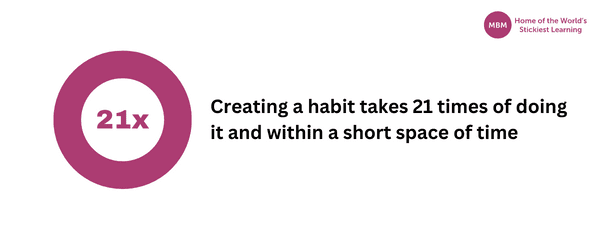
What is Prioritising?
We all have a list of tasks that need to be done on a daily/weekly/monthly basis. However, we don’t always put them in the right order of focus in terms of what needs to be tackled first. Prioritising allows us to create an understanding of what we need to do and when.
All tasks have their own level of urgency and importance. It’s up to us to correctly identify which is which. Otherwise, we run the risk of giving our time and attention to the tasks that really shouldn’t have been our first port of call.
Why is Prioritising Important?
There are several reasons why being able to prioritise effectively is important.
- Increase productivity
- Reduce stress
- Create more time for strategic planning
- Achieve goals that are high-impact
- Increase motivation through the successful completion of team objectives
- Eliminate time-wasting on low-priority tasks
- Improve time management skills
In order to achieve your company goals and objectives, prioritising is a key skill you need to develop and use daily. Otherwise, you run the risk of falling behind in terms of monthly, quarterly, or annual targets.

>> Get My ‘Be Your Eagle’ Planner NOW <<
21 Prioritising Tools and Techniques
Here, we have an amazing selection of 21 top prioritising tools and techniques that will make an impact once you choose which ones work best for you.
#1 – Urgent/Important Matrix
Also known as the ‘Eisenhower Matrix’ because it was possibly the former US President who designed it. A simple tool, yet extremely effective.
The matrix functions from two axes; the Y-axis or down-axis, is how urgent the task is, and the X-axis or across the axis, is how important the task is. By plotting each task into the matrix you can see in the top right of the 4 boxes those tasks that are important & urgent. These tasks should be completed first.
As you move around the 4 boxes, the tasks have an order.
- Box 1 – Urgent/Important – Tackle it now
- Box 2 – Not Urgent/Important – Schedule it
- Box 3 – Urgent/Not Important – Delegate it
- Box 4 – Not Urgent/Not Important – Remove it
From your to-do list, allocate each task to the corresponding box. Determine where each task sits. Consider the following:
- Decide what is time-sensitive
- Identify tasks that can be handed over to others
- Recognise the tasks that have a high impact related to your goals and targets
- Avoid selecting tasks you like/enjoy over tasks you need to tackle
- Ensure your team members are ready for delegated tasks
- Throw out the time-wasting tasks, even if you enjoy them
Click on the image below to see a high-resolution version:
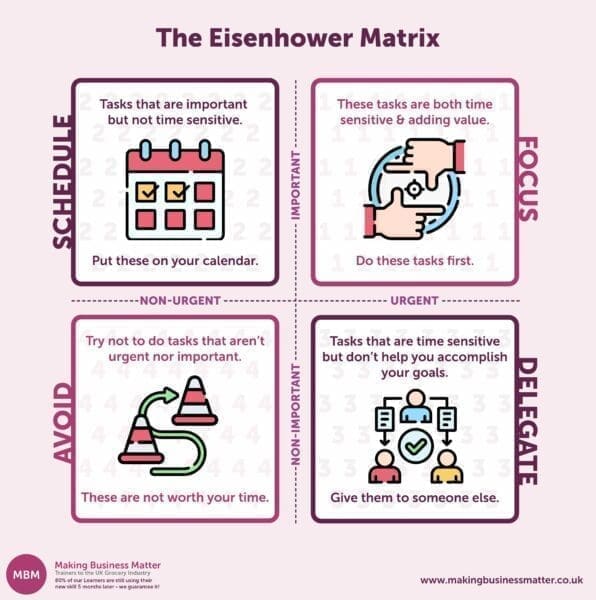
#2 – Eat That Frog
Brian Tracy, a US Time Management expert, wrote the best-selling book “Eat That Frog”. Based on Mark Twain’s quote:
That if the first thing you do in the morning is to eat a live frog, you can go through the rest of the day knowing the worst is behind you.”
Choosing to do the worst/toughest/most horrible thing first takes real discipline because mostly we start with the “quick, fun & easy”, promising to get the tougher tasks later and rarely doing so until the end of the day when everyone else has gone home.
As such, choose to take on the tough task first. Prioritise the one you want to get out of the way to move on to easier, more enjoyable tasks. Concentrate on that one tough task and take the plunge. Then, move on to the other tasks for the day.
Really, what a shame to start the tasks that require our best, and that can make a real difference, when we are at the end of a long and exhausting day.
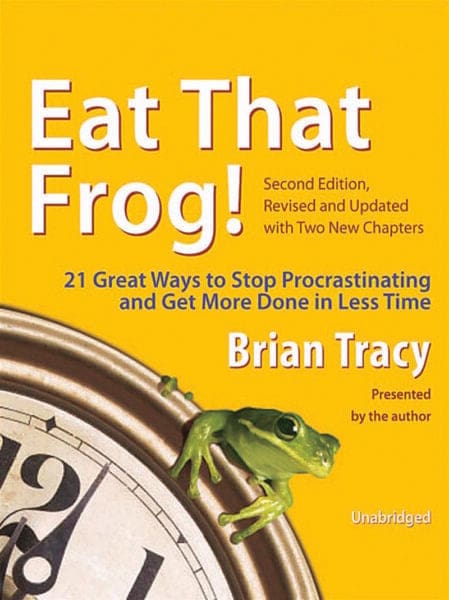
#3 – Learn to Say “No”
Prioritising is about making decisions. We need to know what to do. Plus, what NOT to do. The latter, what not to do, is the hardest, particularly when it comes to saying “No” to people. To help you to say no, we have devised a simple structure that will help. In short, you don’t need to say no, you just need to offer options. For example:
Scenario A
- Colleague: “Please can you help me with this project because you are great at analysing”.
- You: “Yes, let me show you how to now”.
Outcome: You did not say “No” even though you are flat-out busy.
Scenario B
- Colleague: “Please can you help me with this project because you are great at analysing”.
- You: “Yes, can I come back to you later?”.
- Colleague: “Thanks. Yes, of course”.
Outcome: You never went back to the colleague. You just couldn’t say no to them. They now think less of you.
Scenario C
- Colleague: “Please can you help me with this project because you are great at analysing”.
- You: “I am flat out at the moment. What I can do is show you tomorrow at 10 am, do it now if you can do XYZ for me, or ask you to ask Michael”.
- Colleague: <They choose one of the options>.
Outcome: You were honest, open, and direct with your colleagues, did not say no, and gave them options of how you could help. Therefore, allowing you to carry on with what is important.
So, to say no, keep the following in mind:
- Know your current workload
- Acknowledge your limitations
- Recognise time constraints
- Supply options
- Avoid burnout by taking on too much
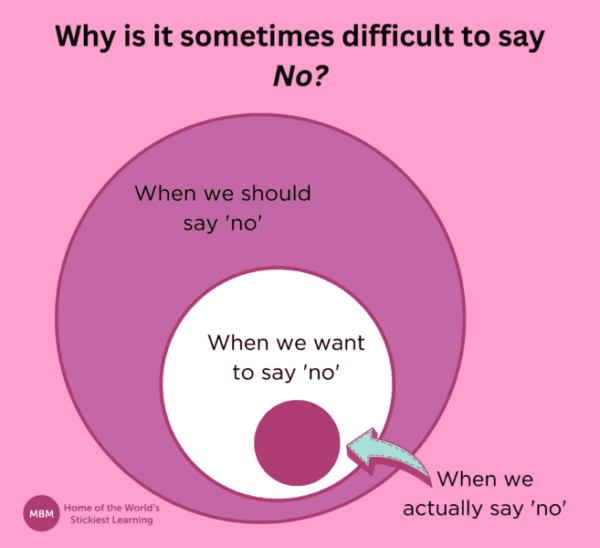
#4 – Beware of the 4-Minute Badger
Having chosen to prioritise a task, stick with it until it is done. It is often shared by so many time management experts that those who can do a task from start to finish are often much more successful than those who cannot. Read about the “Cabbage Butterfly” later in this article. For now, understand the highly distracting 4-minute badger…
Imagine actively driving, a task that demands a degree of concentration but is not excessively exhausting due to your extensive driving experience. Suddenly, a badger runs out in front of you, snapping you into full concentration, and you swiftly swerve. Missed it. Phew! Back to the automated driving, 4-minutes later another badger runs out in front of you, and you swerve again. Two in a few minutes, this can’t be right. 4-minutes later, another – what’s going on?!

You receive about 120 emails per day. That’s one every 4 minutes. An email notification pops up – your mind says – “I’ll just take a look and see if that is urgent”. It’s not about urgency, it’s about being curious and anything that takes you away from the current task. Turn off your email notifications and stop the badgers running out in front of you. Instead, stay focused on what is urgent and important. Use self-discipline to remain on topic. Also, use some of the following steps to avoid badgers:
- Close your door when you need to focus.
- Put your phone on silent to avoid email/social media/text message notifications.
- Block time in your calendar for tasks that need your full attention.
- Inform your team when you need time to concentrate.
#5 – Book a Meeting with Yourself
If you are packing your calendar like playing Tetris – with no space between meetings – then book a meeting with yourself. As a result, you free up some time for important reflection on your tasks until that point and what is still pending. Use this opportunity to realign your tasks as required. And, take a well-deserved breather to refresh for the next tasks.
#6 – Procrastinate to Prioritise
Yes, I’m telling you to procrastinate. Don’t do the things that don’t need doing. Obvious? Maybe, yet you are doing tasks that you don’t need to do because you are putting off tasks that you don’t want to do.
#7 – ‘I Have Tickets’
You know when you have tickets to the theatre, or a concert, or the cinema, and you must be away from work by 5.30 pm? It’s amazing how you just seem to get so much done in a day. A sense of focus, drive, and determination is with you all day. How about adopting that mindset on other days? Apply the “I have tickets” mentality for better focus.
#8 – “Sharpen the Saw” to Improve Your Prioritising Skill
You’ve probably heard of “Sharpen the Saw”. Stephen Covey wrote the “7 Habits of Highly Effective People” book and habit #7 is about improving yourself. He tells the story of two lumberjacks and one saws all day whilst the other stops to sharpen the saw and gets more done. As you read the tools in this article you are sharpening the saw, but it only works if you put one into practice.

So, how can you sharpen your saw for work tasks? Here are some examples.
- Stay healthy – then you can give more to your work.
- Continue to improve your knowledge and technical skills.
- Make time for yourself to create balance in your life.
#9 – Key Result Areas
What are they? Find out in this article ‘Key Result Areas‘. To incentivise you to do so…you have heard of KPIs, which set the targets for a team. Let’s say that is a £1m sales target for the sales team. It may even be broken down to £100k per salesperson. KRA’s are about understanding what things need to be delivered in order to achieve that sales target. For example:
- 12 cold calls per day.
- 1% open click rate on all digital marketing emails.
- 25% of all prospects converted to a sale.
Key Result Areas are about identifying what is important to achieve so that the KPIs are achieved. By identifying these we can then prioritise tasks that deliver them.
Click the image below for a larger version:

#10 – Use One to Seven Time to Do Your Prioritising
For every 1-minute planning saves 7 minutes in execution. Start each day with a to-do list of things you want to get done. Don’t start with your email inbox because you’ll never come out of it.
Start with a daily to-do list because if you don’t have a plan for the day other people will plan your day for you by sending you emails, delegating to you, and asking for your help. It doesn’t mean that you don’t do what they ask – that’s up to you – it does mean that you don’t only do what is asked because you have your own plan for the day.
#11 – ABC Method
You’ll need a list of tasks for that day. Once you have this list you then choose what needs to be done using the ABC method:
- A: Mark all items on your to-do list with an “A” for those that must be done today.
- B: Mark all items on your to-do list with a “B” for those that should be done today.
- C: Mark all items on your to-do list with a “C” for those that could be done today.
Once you have done this, then look at each “A”, and add an “A1”, “A2”, “A3”, etc. to order those and then start with the B’s, and then the C’s. The shorter version of this is to just do the A’s.
You then have your plan of attack for the day!
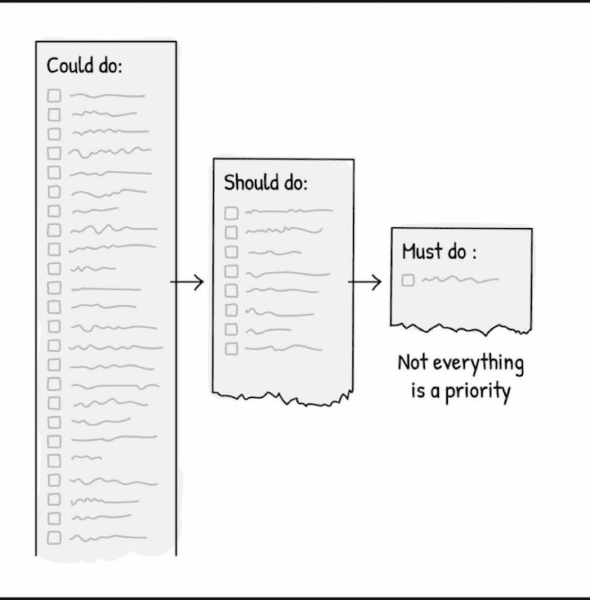
#12 – The Italian Philosopher – Pareto
You may have heard of the 80:20 rule. Vilfredo Federico Damaso Pareto was an Italian civil engineer, sociologist, economist, political scientist, and philosopher. His principle of 80:20 principle stated that 80% of outcomes come from 20% of causes. For example, in time management, 80% of the difference you make comes from 20% of your tasks.
Don’t believe me?
Think back over the last year, you probably did a few projects, made a few decisions, or delivered a few pitches that really made the difference. What were they? Can you do more of those things? Prioritising is about knowing what makes the difference and doing more of that and less of what does not deliver the big differences.
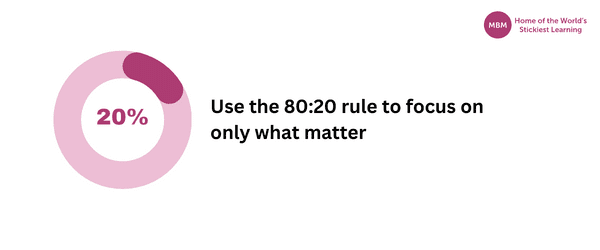
#13 – The Law of Forced Efficiency
The more things you have to do in a limited period of time, the more you will be forced to work on your most important tasks. This is another way of saying that there is never enough time to do everything, but there is always enough time to do the most important things. ‘If you want something done give it to a busy person’.
Be the busy person who doesn’t have time to get things done. You’ll focus on priorities, and procrastinating on tasks that add little value.
#14 – ‘Am I in the Right Forest?’

Extending our story above about the two lumberjacks, consider they are sawing down trees. Both working hard, sweating, stopping to sharpen the saw. Then, at the end of a long and exhausting day, the supervisor comes over and she says to Lumberjack 1, “Great job. You have achieved your quota”. She drives across the forest to Lumberjack 2, “You were supposed to be working in that part of the forest over there! Idiot”.
Make sure you can connect a strong chain between the tasks you are working on, with your KRA’s and then your KPIs. There is no point in working hard on tasks where you cannot see the impact on your targets. It’s easy to work hard. Much harder to work on the right things. By prioritising the tasks according to the forest you need to cut down, will help you achieve the difference you need.
#15 – £10 per Hour: What are You Worth?
You are worth x per hour. If you don’t know take your annual salary and divide it by 2,000 hours. This is your hourly worth.
You need to know how you add value. There are tasks you do that are well worth your cost. There are tasks that are not worth your cost. For example, if you are a manager earning £50,000, which is £25 per hour, you should not be doing low-level admin tasks that could be completed by an administrator earning £10 per hour. Your time should be spent earning your £25 per hour making decisions, writing strategies, managing your team, etc.

#16 – The Magic 3 Hours
What are the “Magic 3 Hours”? Hyrum Smith wrote a book called, “10 Natural Laws of Successful Time and Life Management: Proven Strategies for Increased Productivity and Inner Peace Paperback”. In his book, he speaks of the 3 magic hours. A block of time when you are at your best. Most of us know that we are “early birds” or “night owls”. We are best in the morning, the afternoon, or the evening.
Hyrum took this one stage further believing that we have 3 great hours in a day where we can achieve so much. Identify when you have your magic 3 hours and optimise them to focus on your priorities, your big tasks, and those tasks that make the biggest difference.
#17 – Make the Decision
Nothing used to irritate me more in my corporate role than individuals who refused to make decisions. They believed that avoiding a decision was acceptable, even though they were aware that inaction would result in the situation resolving itself. They were unwilling to take control, fearing that making a decision might lead to mistakes.
By allowing the situation to determine the outcome, they could avoid being held responsible. These were high-level executives entrusted with decision-making responsibilities, yet they opted to abstain. Make a decision and take responsibility for it. Set priorities and own them.
#18 – No Cabbage Butterflies Will Deliver Better Prioritising
I was 5. I had Woolworth’s red wellies. And those gloves that hang on a string from the arms of your coat. Dad and I were in the garden on Saturday morning. He was a keen vegetable gardener. I was playing in the mud. He was swearing. Swearing at the cabbage white butterflies that had been eating his cabbages.

A cabbage white butterfly sits on a cabbage eating the leaf. It looks up and sees another tasty cabbage a few feet away. Flies over. Nibbles that one. Sees another. Flies over. Eats that one. Moving from one cabbage to another, nibbling. Never finishing a whole cabbage (Though if the butterfly did, he’d be enormous and couldn’t fly!).
Time management experts call it “Task switching“. The research tells us that to task switch adds 50% more time to a task. “Start to complete” is the way forward if you want to be more productive.
#19 – Evaluate Your Week Using the 77B Method
Now to do your own 77B Review, simply follow the seven steps below:
- Grab a clean page.
- Write a big “P”, a big “M”, and a big “A”. Write them on the left of the page, spaced out. See the image below.
- Next to the “P”, write 3 things that were positive about this week.
- Next to the “M”, write 3 things that were not so good about this week.
- Smile about what you did well.
- Next to the “A”, write one thing that you will do differently next week. Build on the positives, or fix the minuses.
- Grab a well-deserved beer (or your particular beverage of choice) and think that next week is another week!
Why is this Weekly Review Called the ’77B’ Method? The reason we call it ’77B’ is because it takes 7 minutes. You write 7 items; 3 positive, 3 minus, and 1 action. Then, because you do it last thing on a Friday, you can grab a beer! Best of luck.

#20 – No Wooly Mammoths
Don’t write big horrible tasks on your to-do list, like Bridget Jones did – “sort life”. Instead, write the first practical and simple action to get the task moving because then the “snowball will roll down the hill”. Instead of “Move house”, write “Call estate agent”. The brain sees big tasks and finds anything else to do. However, it likes small tasks.
#21 – Remember ‘Good Enough’ to Manage Quicker Prioritising
Note that perfection can be our downfall. Not every task needs to be done perfectly. Choose when perfection is needed, e.g. for an important client pitch. Good enough can be the quality you choose for an internal report to one person, a piece of work for a junior, or when someone just needs the outline of an idea. Choose the quality level you want to deliver.
In Conclusion
So, there you have it, 21 amazing tools and techniques that can get you on track in terms of effective prioritising. Remember the following points:
- Make a start with even one of the tools – starting is the hardest part.
- Select the tool/technique that suits you and your style best.
- Implement the technique 21 times to create the habit – give it time to work.
- Adjust your choice for different situations as needed.
- Identify urgent and important tasks that align with your goals and targets.
- Keep some free time for unexpected requests or tasks.
- Lastly, invest the time at the start of each day to plan properly – it saves time later.
Finally, at MBM, we have many available resources and tools that can help you develop your prioritising skills, time management skills and related topics. Check out our other blog articles as well as our amazing coaching cards.
Updated on: February 29, 2024




